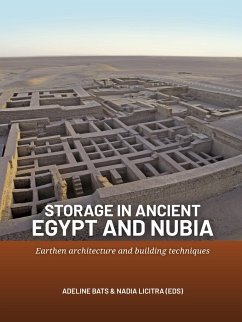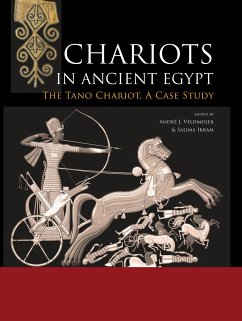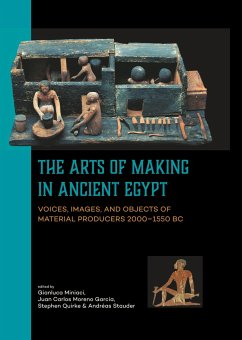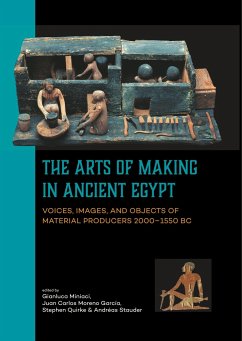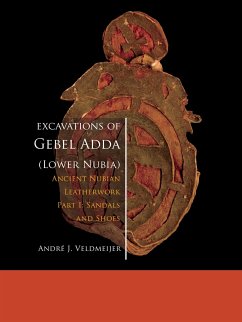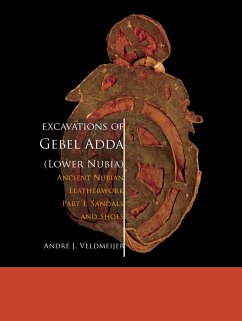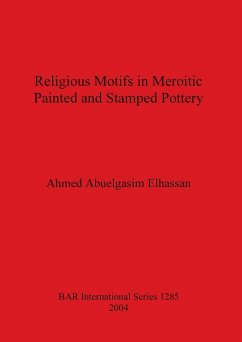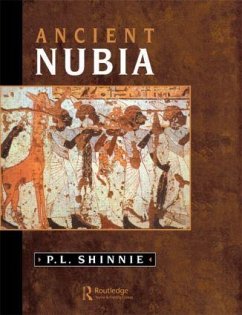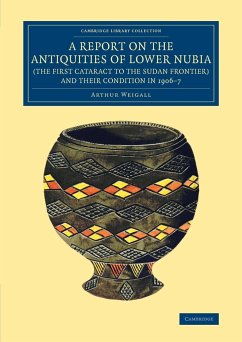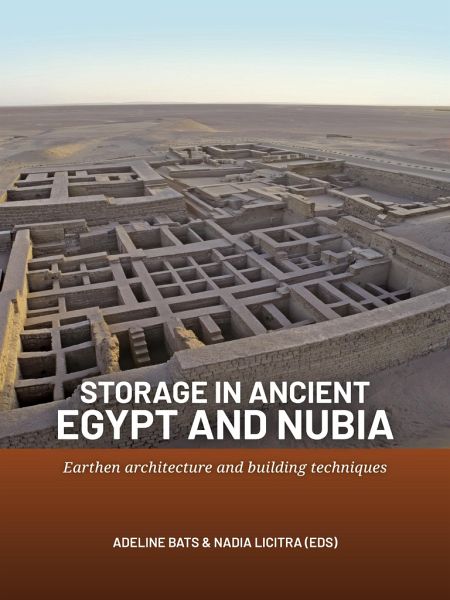
Storage in Ancient Egypt and Nubia
Versandkostenfrei!
Versandfertig in 1-2 Wochen
33,99 €
inkl. MwSt.

PAYBACK Punkte
17 °P sammeln!
In 2020 and 2021 the Research Group on Storage in Ancient Egypt and Sudan organised two online workshops focusing on earthen storage buildings in ancient Egypt and Nubia. Following these two meetings, the nine contributions of this volume present often unpublished case studies (from the IVth millennium BCE to the Greco-Roman Period), as well as issues and perspectives of current research. They are authored by archaeologists working in Egypt, Sudan and Western Africa as well as architects specialised in earthen architecture.The interdisciplinary approach adopted to investigate storage strategie...
In 2020 and 2021 the Research Group on Storage in Ancient Egypt and Sudan organised two online workshops focusing on earthen storage buildings in ancient Egypt and Nubia. Following these two meetings, the nine contributions of this volume present often unpublished case studies (from the IVth millennium BCE to the Greco-Roman Period), as well as issues and perspectives of current research. They are authored by archaeologists working in Egypt, Sudan and Western Africa as well as architects specialised in earthen architecture.The interdisciplinary approach adopted to investigate storage strategies along the ancient Nile Valley effectively address the subject's complexity and the socioeconomic issues involved, which not only pertain to the ancient world but are also relevant to modern-day societies. Throughout the volume, functional and technical analysis of the architectural and archaeological remains helps understand how specific layouts, building materials and techniques were employed in the past to create suitable conditions for short-, medium- and long-term storage.Ethnographic and ethnoarchaeological comparisons with West African vernacular traditions are used as a fruitful line of research for better understand of building practices, storage strategies and possible volumes of archaeological remains. Furthermore, extending the scope of the research to other geographical areas shows how different human groups may have used similar responses to overcome similar technical problems. Ancient and traditional practices and know-how, on the other hand, proved effective in a contemporary onion storehouse project in Senegal to find sustainable, low-cost solutions to protection and development of local products.The volume also include the preliminary results of an experimental archaeology project which led to the construction of a mud-brick silo - according to ancient Egyptian techniques - and further ensiling. The issue is highly topical since these ancient earthen facilities offer valuable information for the current debates on sustainable strategies for foodstuff storage.ContentsStorage buildings in ancient Egypt and Nubia. Issues and perspectivesAdeline Bats, Nadia LicitraPits, pots and silos: Storage facilities at the Predynastic and early pharaonic settlement of ElkabWouter Claes, Stan Hendrickx, Elizabeth HartLes structures circulaires de stockage à Karnak aux XIIe et XIIIe dynastiesMarie MilletLe bâtiment BAT 603 de Kôm el-Nogous/Plinthine : un édifice de stockage polyvalent de l'époque saïto-perse ?Bérangère RedonLe thêsauros ptolémaïque de Tebtynis (Fayoum)Gisèle Hadji-MinaglouUn thêsauros à Bouto. Architecture et organisation d'un bâtiment de stockage dans le Delta nord-occidental à l'époque impérialeLoïc MazouVariabilité des dispositifs de stockage en Afrique de l'Ouest : approches ethnoarchéologiquesAnne Mayor, Thomas PelmoineIntérêts croisés des échanges transdisciplinaires entre architecture, archéologie et développement durableDavid Gandreau, Thierry Joffroy, Philippe Garnier, Nuria Sanchez Muñoz, Majid Hajmirbaba, Mauricio Corba BarretoThe Egyptian mud-brick silo. Technical and functional analysis of a grain storage deviceAdeline Bats, Nadia Licitra, Thierry Joffroy, Bastien Lamouroux, Aurélie Feuillas, Julie Depaux



